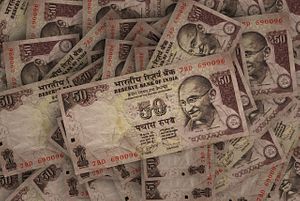While short-term indicators show that the Indian government has failed to meet stated objectives, demonetization could be an economic success in the long term.
When Prime Minister Modi announced plans to demonetize ₹500 and ₹1000 notes on November 8, 2016, he said removing black (undeclared) money from the economy would combat both terrorism and corruption.
Data released by the Reserve Bank of India (RBI) indicates that demonetization has failed to flush out black money. Nearly 99 percent of the scrapped notes were deposited into the country’s banks and have re-entered the country’s monetary system.
“So, the main objective of forcing people with black money to suffer losses has failed miserably,” tweeted P. Chidambaram, India’s former finance minister. “Terrorist activity has not abated and black money continues to be generated and used.”
By reducing money supply, demonetization has also acted as a temporary drag on India’s gross domestic product. The country’s second quarter GDP growth fell to 5.7 percent, which was below a consensus estimate of 6.6 percent for that quarter.
Medium-term indicators are more positive, however.
As the dual shocks of demonetization and the GST implementation subside, forecasters expect the country’s tax base to grow larger and help drive the GDP in the fourth quarter to around 8 percent.
Removing notes from circulation has acted as a catalyst for mobile money and other forms of electronic financial transactions. The RBI said the use of digital financial services has increased since demonetization.
“The upward trend is expected to increase as the Finance Minister is also stressing the linking of mobile phones with account numbers, including Jan Dhan Yojana,” said Professor Charan Singh, who teaches monetary economics at the Indian Institute of Management Bangalore. “Fintech companies are joining in and banks are encouraging mobile banking through specially created apps.”
A report by PwC India said that demonetization has compelled small and medium business (SMB) lenders to embrace digital technology and payments. The consultancy also found that more than 95 percent of traditional financial firms in India are looking to partner with fintech companies in 2017.
Though the task of translating English digital cash services into regional languages could slow growth in rural areas, the long-term prospects are promising, added Professor Singh.
Since cash accounts for nearly 13 percent of India’s economy, the bureaucratic and logistical apparatus required to circulate that much cash through the economy is expensive to maintain. By reducing the cash that needs to be “serviced,” demonetization provided a stimulus for digital banking, which could ultimately be its legacy.
“Demonetization should not be viewed in a narrow sense as simply searching for unaccounted money,” Singh said. “It will meet the aspirations of young population, improve India’s rank in Ease of Doing Business and encourage growth.”

































